Among the myriad of populations that once inhabited the vast prairies of North America, the Natchez of the Southern Mississippi Valley. In fact, although belonging to the confederation of Cree tribes of the Muskogee language, they spoke a peculiar dialect and very distinct from that of the other populations of the South-East, called Natchesan. From the few sources that history has handed down to us it seems that their culture, of a sedentary type, was born around 700 AD and that it was strongly influenced by the great Mesoamerican civilizations, especially as regards the cult of the Sun — and of the deified ruler as his son—And the voluntary practice of immolation as a practice worthy of the highest honor.
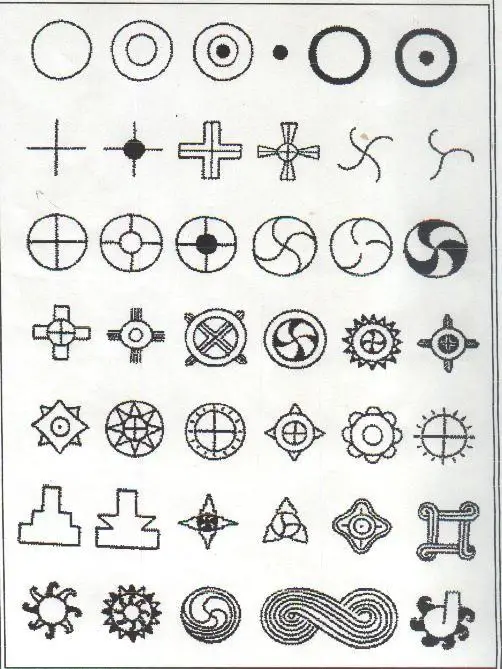
Correspondences with pre-Columbian civilizations such as Aztecs, Maya or Incas they can be accepted without too much trouble, but there is more. The Natchez tradition, in fact, presents at the same time surprising points of contact with the ancient Indo-European civilizations (Vedic India, Greece and archaic Rome, Nordic area) starting from the very symbol of the tribe—clearly solar in nature—similar to a swastika Hindu, a symbol that is also found in the Italic mosaics and in the Hellenic and Nordic decorations of antiquity. Other correspondences with the cultures of archaic Europe are the cult of the sacred fire- which had to remain permanently on and which was ritually extinguished only once a year, to be then renewed again - the division of society into three castes according to the Dumézilian subdivision (priests, warriors, producers) and the ceremony for the fertility of mid summer, as we will see.
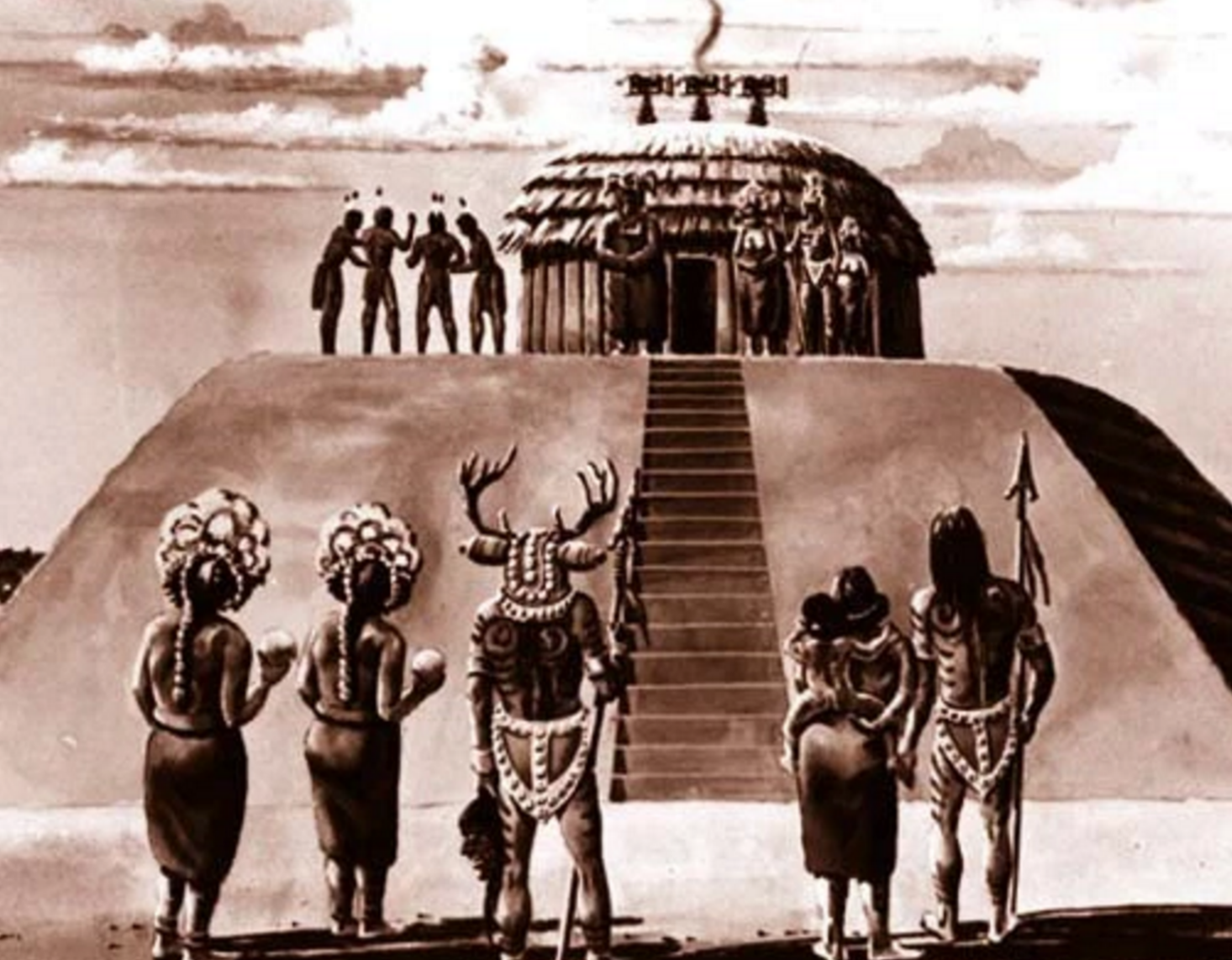
The Natchez were able to build terraced buildings and their economy was mainly based on the cultivation of corn and on the processing of hides. Regarding their mysterious origin, De la Vente wrote: “The Natchez have a sure and precise tradition and count from 45 to 50 heads that have succeeded each other over time. They came from a very distant land, probably from the South-West ”. Their ancient homeland could also have been Mexico: this thesis was also supported by Du Pratz. We know that the Natchez soon found themselves leading a number of smaller tribes, most of which were unrelated to them. This fact, perhaps, could explain the existence among the Natchezes of an absolutely hierarchical social and political system, which it envisaged the existence of 4 castes (or rather the "Great Sun" plus three classes: priests, warriors and producers).
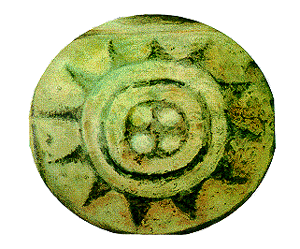
However, although the language used by the wealthier social classes also differed considerably from that of the lower classes, the unique feature of the Natchez social system is the very high social mobility. The latter is desired to the point that by law it is forbidden for members of the same caste to marry: marriage, therefore, necessarily took place between people of different ranks. We know, in fact, that members of the noble caste were required by law to marry plebeians. The offspring of noble women and plebeian men went to fill the ranks of the noble caste, while the children of noble men and plebeian women became warriors. This customary norm, adopted to avoid excessive social immobility, is absolutely not attributable to any known Mexican culture.

The Great Sun and voluntary immolations
The leader was referred to as al Great Sun. He could have numerous wives and several servants, which he had to support. The royal bloodline was matrilineal, which means that the Great Sun was established in his office thanks to the parental ties he contracted by marrying a woman of the highest caste. The Great Sun was worshiped as a god and had absolute power over the lives of his subjects and was often carried on a litter by eight men (note the solar symbolism). The Great Suns were revered to the point that upon the death of a Sun, many practiced the voluntary ritual suicide, as was the case with the death of other tribal personalities, such as the queen or the leader of the warriors. On the death of the Chief of War, the Tattooed Serpent, in 1725, two of his widows, one of his sisters, his first warrior, his doctor, his chief adjutant and the adjutant's wife, his nurse and a craftsman of spears of war, they spontaneously chose to die with him. It seems that even his brother, the Great Sun in power at the time, wanted to die with them, but it is said that he was persuaded by the pleas of his French allies to stay alive. At the beginning of the XNUMXth century, French settlers installed in French Louisiana attended the funeral of the Great Queen during which human sacrifices were organized, as well as those of the Great Sun, which were probably nothing more than voluntary ritual suicides.
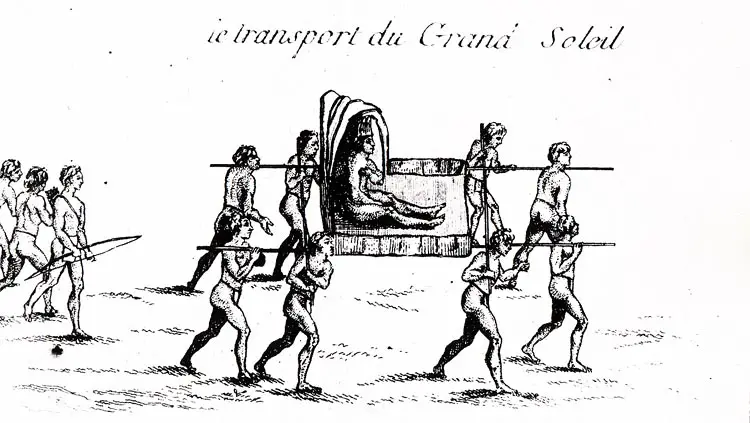
The three castes
Subject to the chief, there was a permanent caste of nobles who carried out priestly and cultic functions: they were in fact in charge of looking after sacred things and of providing for the cult of the sun and the planets. The person in charge of leading the religious ceremony wore a crown of red and white feathers and, to recall the god during the rite, he smoked the calumet in the direction of the sun. As for the warrior caste (o honorable men), often their social position was determined by the number of enemies killed in battle. As the nobles found their supreme leader in the Great Sun, the warriors also elected one, named War Chief. The remaining caste is made up of artisans and producers: they are sometimes referred to as plebeians. The only peculiarity that distinguishes the caste system of the Natchez from the Indo-European ones is the extreme social mobility that characterizes it. For the rest, we note the full correspondence with the functional tripartite division of Vedic India (Brāhmaṇa, Kṣatriya, Vaiśya), of archaic Rome (Flamini, Patrizi, Plebei; represented by the divine triad Jupiter, Mars, Quirinus) and the ancient populations of northern Europe (symbolized in the divine triad Wotan-priestly function, Thor-warrior function, Freyr-productive function).

Solar tradition and eagle symbolism
To better understand the masculine, sunny and warrior aspect of the Natchez society, it seems only right to cite the authoritative opinion of Frithjof Schuon about the Plains Indians (The Tradition of the Red Indians, p.33):
The fascinating combination of combative and stoic heroism and priestly bearing gave the Indian of the Plains and the Forests a sort of majesty that was both aquiline and solar, whence that powerfully original and irreplaceable beauty that is linked to the red man and contributes to the his prestige as a warrior and martyr. Like the Japanese of the time of the Samurai, the Red Indian was profoundly an artist in his own personal manifestation: besides the fact that his life was a perpetual game with suffering and death, and therefore a sort of chivalrous karma-yoga, he knew how to give this spiritual style an aesthetic coating of unsurpassed expressiveness.
On the other hand, as he states Antonio Medrano (in appendix to Schuon's work, p.55):
Perhaps nothing reveals more clearly the solar orientation of the spirituality of the ancient populations of the woods and prairies of North America and the dignified superiority of those "savages", sacrificed on the altars of "progress", as the symbolism of the eagle. The eagle: the warrior and aristocratic bird with shining eyes and powerful wings, whose flight has something regal and superhuman: the bird that looks at the sun face to face and that in its majestic ascent seems to get lost in the sublimity of the heights : the animal that symbolizes in the most perfect way the reality enclosed in the expression "Solar race".
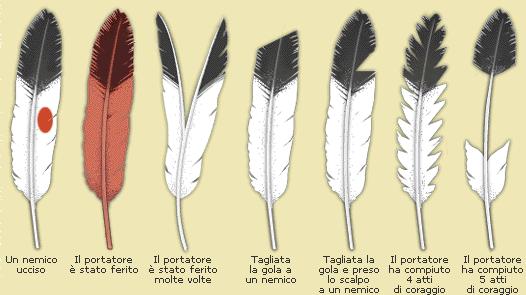
Similar to numerous other native peoples of North America, also in Natchez symbolism the eagle is equivalent to a hierophany of the divine. Eagle feathers are ubiquitous in the Natchez aesthetic (in the clothing of priests and warriors as well as in ceremonial decorations - e.g. combined with peace pipe) and constitute the highest mark of distinction for warlike enterprises, a "sign of truth and immortality, of spiritual power and homage to heavenly powers" (p.63). This, continues Medrano, is by no means accidental, as (p.56):
The eagle, effectively, as an emblematic animal representing the solar principle, as the embodiment of valor, strength and power, as a symbol of I fly upwards and of the majesty that rises with Apollonian serenity above earthly things, appears at every moment associated with the spirit of man, with his most intimate reality.
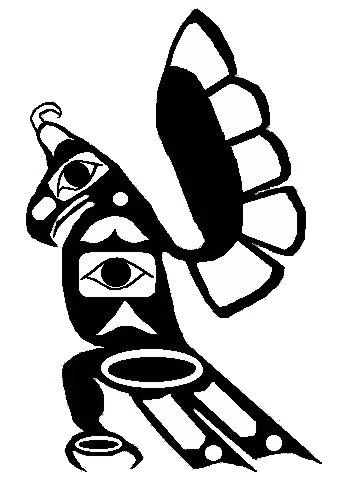 After having therefore observed how the conception of the eagle by Native Americans "reproduces the principle hidden in every spiritual manifestation of the lineage of air, which makes the eagle the solar bird par excellence" (p.62), the author emphasizes that in the Hellenic tradition it is the attribute of Olympian Zeus and in the Roman one of Jupiter (the supreme god of thunder and lightning, like the Wakan-Tanka of the Amerindian tradition) and which also represents a central element of rite of divinificatio of the emperors, not only in Rome but also among the Aztecs and, with equivalent symbols, among the Egyptians (the falcon of Horus) and - we add - the Incas (the condor), the Tibetans (the vulture) and the Norsemen (the eagle as an animal sacred to Wotan, the supreme god of the Scandinavian pantheon).
After having therefore observed how the conception of the eagle by Native Americans "reproduces the principle hidden in every spiritual manifestation of the lineage of air, which makes the eagle the solar bird par excellence" (p.62), the author emphasizes that in the Hellenic tradition it is the attribute of Olympian Zeus and in the Roman one of Jupiter (the supreme god of thunder and lightning, like the Wakan-Tanka of the Amerindian tradition) and which also represents a central element of rite of divinificatio of the emperors, not only in Rome but also among the Aztecs and, with equivalent symbols, among the Egyptians (the falcon of Horus) and - we add - the Incas (the condor), the Tibetans (the vulture) and the Norsemen (the eagle as an animal sacred to Wotan, the supreme god of the Scandinavian pantheon).
The religious system
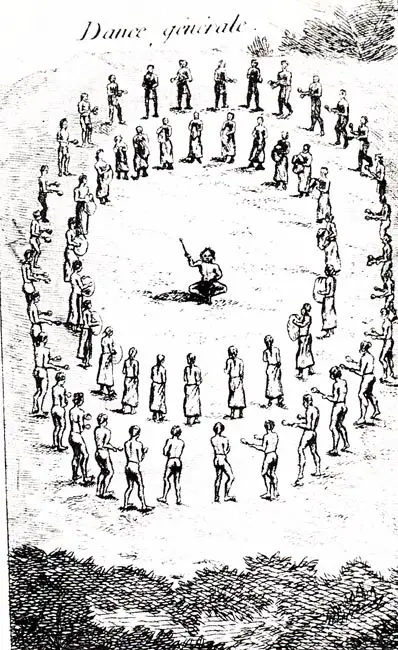
The religion of the Natchez was of the skamanico-animist type: their supreme god was Coyocop Chill, the sun god, and the spirits were called Coyocop Techu. The Natchez practiced magic both for the benefit of the community and of the individual. The shaman performed complex rites handed down secretly, which allowed him the control of atmospheric phenomena; in periods of drought he performed propitiatory and purifying rites, such as long fasts and specific dances. During the ritual dances, the participants in the ritual used to wear eagle feathers and false wings, in the same way as the Incas. They also made use of sympathetic magic, and believed that those who lived without departing from the rules of tribal society would come, after death, to a place of joys similar to paradise. They built on ancient mounds large domed temples in which they carved wooden images of birds facing east. On the altar of the temple there was a chest made of reeds, inside which the bones of the dead suns were kept.

The sacred fire and the ceremony of green corn
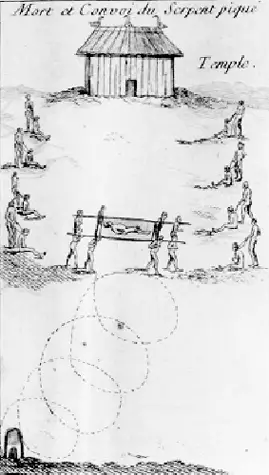
In these temples, the Natchez honored their deities: in them the sacred fire of the Sun God was never to be put out. All village fires, including the sacred fire, were put out once a year, there night of mid summer, for the ceremony of Green Corn: Busk, in honor of the Goddess of Wheat (or, more generally, of fertility, like the Mediterranean Ceres) which by immolating itself in mythical times had given corn - then the prerogative of the gods - to humanity. In the morning, the fire of the temple was kindled again and by means of its flame all the members of the tribe also rekindled the domestic ones. The worship of the sacred fire is usually traced back to an ancient religious conception of the Indo-European peoples, which sees its first manifestation in the Vedic god Agni and, later, in the cult of the fire of Hestia in Greece and of Vest in Rome. There was in fact, in the temple of Vesta, a perpetual flame that burned and that the Vestals, virgins consecrated to the goddess, had the task of keeping alight; even accidental extinguishing of the fire was punished with a death sentence. Even among the Natchez, anyone who allowed the sacred fire to go out met the same fate. It is also curious to note two other singular correspondences. Even the cult of the goddess Vesta provided that once a year the sacred flame was renewed: this happened on 1 March, the day of the Roman New Year. Furthermore, the goddess Vesta was celebrated in the Vestalia that took place in the week from 7 June to 15 June, therefore in summer. The first day of the celebrations was dedicated to the annual opening of the temple for sacrificial rites. We also add that a celebration very similar to that of green corn we find it practically in all populations of archaic Europe (Nordic, Germanics, Mediterranean, British, Slavs, Iberians, Caucasians) often handed down to us under the name of midsommer (midsummer, in fact). In Sweden, where this tradition has remained intact over the centuries, still today towards the end of June people gather around the midsommarstång, a pole decorated with flowers around which you can dance, or a symbol of fertility for the summer season at its peak. Even the Natchez, during the midsummer celebration, used to gather around a pole or a vertical construction adorned with wheat leaves and cobs, and dance around it for hours singing songs to encourage the full awakening of the goddess of fertility. , exactly as the Scandinavians still do today.
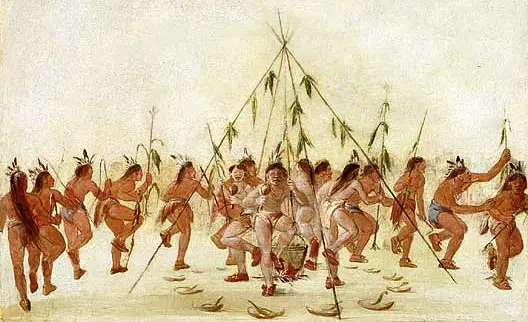
Mythical corpus and folklore
Although the Natchez tribe still exists today — and is governed by a form of government that is roughly a continuation of ancient customs — not much of their mythical corpus remains. This depends in the first place on the countless cases of mass suicides (often of members of the noble caste, custodian of the esoteric mysteries) that have affected the Natchez people since certain news is available and which has gradually reduced, in an increasingly alarming way, the number of tribe members. Furthermore, following a massacre by the Natchez warriors against a few hundred settlers settled near their territory, they were further decimated, deported and sold as slaves by French troops, until they were reduced to a few hundred.
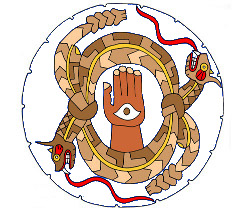
Among the mythical characters of the Natchez narratives we find the pair of legendary twins Lodge Boy e Thrown away (o Wild Boy), born from the killing of the mother by a monster; the Rabbit, who personifies the trickster in Natchez mythology; Holobits, a monstrous snake similar toUktena of the Cherokee; Tlanuwa, a mythical giant bird with metallic feathers, also common in Cherokee folklore; the u'lax daxgi'ilu, a category of aquatic spirits in the form of a snake endowed with superhuman strength, capable of dragging the poor unfortunate underwater; and finally a cannibal giant common to all the folkloric traditions of the south-east and one race of little men, older than today's humanity, which we find almost everywhere in Native American legends.
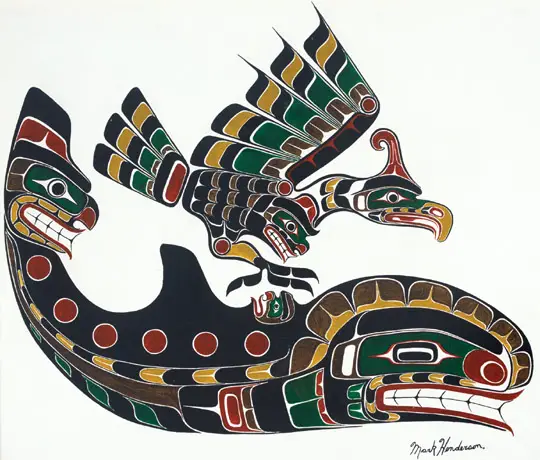
Of the mythical narratives that have come down to us, we report two: one linked to a mythical figure, a cultural hero sent from heaven as savior and civilizer; the other concerning the almost universal myth of the flood that took place in mythical times. With regard to the first myth, the Natchez hand down that in ancient times the son of the Sun God descended on Earth and, having chosen them, brought civilization to them by giving them laws, customs, ceremonies and arts such as to make them superior to the peoples of the neighboring areas. After fulfilling his mission, this deity retreated inside a stone, which has since been preserved inside the main temple (note that the Indo-European sun god Mithras It is born from a stone). The aforementioned Shuon, quoted by Medrano (p.65) points out that, in the vision of the Indians, there is an association between the Thunder Bird and the rock, "the latter being linked, in all traditions, to the sacred symbolism of solar immobility, immutability and centrality". Medrano adds:
While, on the one hand, together with the idea of solidity, firmness, spiritual stability, the rock materializes the celestial and luminous principle - the stone as a manifestation of the light that is projected from the sky onto the earth made sensitive matter - on the other hand it carries implicit a clear warrior meaning: take into account its resistance to any type of attack and its offensive and destructive power (the Indian gets the material for packaging his weapons from the rock).
As for the flood, the Natchez say that in a mythical past it affected the whole world and that only a few couples, warned by the Dog, built a raft and were saved from the flood thanks to the branches of a large tree. Seven days after the flood began, when the survivors arrived on the mainland, they realized that no one else besides them had been saved; the only sound they heard was an unbearable hum. At one point came a very old man, who told them, “This hum that you hear comes from ancestors(antediluvian humanity), which you think are dead. They, on the other hand, are not at all, but they continue to live in spirit". Another legend about the flood tells that the survivors, as a result of the flood, no longer held fire: but the Eagle flew into the sky, and - like a new Prometheus - gave them the The fire, symbol of sacredness, life and power. Also this myth handed down to us as for the Native Americans, quoting Medrano again, the eagle represents (p.67):
[…] The symbolic embodiment of the supreme spiritual force, immutable and unalterable, supernatural and otherworldly, which, projecting itself onto the manifested universe, works in a creative and destructive way at the same time, in order to shape cosmic harmony.
Online insights:
- http://www.native-languages.org/natchez-legends.htm
- https://en.wikipedia.org/wiki/Natchez_people
- http://www.farwest.it/?p=2593
- http://swdm.altervista.org/indians/c/natchez.html
- http://nationalhumanitiescenter.org/tserve/eighteen/ekeyinfo/natcult.htm
- http://www.britannica.com/topic/Natchez-people

A comment on "The mysterious Natchez Indians, Children of the Sun"